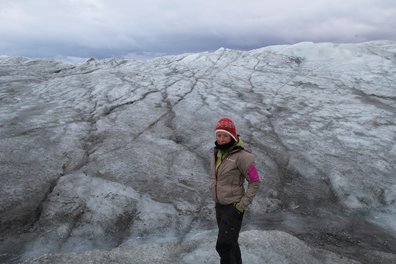Villum grant for Tina Santl-Temkiv
How do sea ice microorganisms effect cloud processes in the Arctic?
Assistant Professor Tina Santl-Temkiv at Bioscience and SAC has been granted Dkr. 2 million from Villum Experiment for a new project.
The title of the project is "Deciphering the role of sea-ice microorganisms on cloud processes in the Arctic".
How does the discharge of microorganisms caused by the massive sea-ice melt affect cloud processes in the Arctic? The project combines field measurements at the Villum Research Station in northeast Greenland and laboratory simulations in collaboration with the Atmospheric physical chemistry group at the Department of Chemistry, AU. The project focusses on the ice nucleating microorganisms that have defining roles in arctic cloud processes. Based on the known ice-binding properties of the ice nucleating microorganisms, it is hypothesized that the sea ice selectively incorporates and therefore concentrates these types of microorganisms. Once the sea ice melts, these cloud-forming microorganisms get released into the surface sea layer, from where they can enter the atmosphere. Thus, due to climate changes that cause progressive sea-ice melt, the consequent changes in seawater microbial composition may affect the weather and climate in the Arctic.
Tina on not-so-thin ice
Virtually nothing is known about effects of ice melt on marine budgets of ice nucleating microorganisms, and thus on future cloud cover and radiation budgets in the Arctic. Thus, this project will study a so-far completely overlooked aspect of interactions between sea-ice, sea and the atmosphere. Understanding the emission processes from arctic seas that this study will provide is necessery for predicting future climate in the extremely vulnerable arctic region.
- And how could this be relevant to finding life in the universe?
The project will contribute to understanding the effect of atmospheric particles containing biological material on cloud formation, and ultimately on weather and climate on Earth. Such imprints of life on the global planetary processes may in future serve as alternative bio-signatures on Earth-like planets, making them easier to distinguish.

